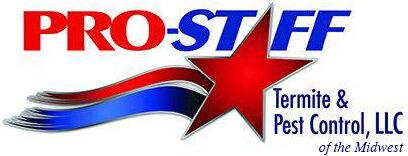
Bird mites typically live on poultry and wild birds. However, they will crawl onto a person coming into contact with these birds. The Des Moines pest control specialists at Pro-Staff want to give you a better understanding of bird mites and how to keep them from invading your body and home.
What are bird mites?
Bird mites are small, visible arachnids that are usually gray or brown, but may appear in different colors and shades. Adults have the traditional 8 legs of an arachnid, but earlier stages sport an insect-like 6 legs. In other words, don’t count the legs to determine if you are looking at a mite. While they may bite humans, they do not reproduce on human blood. If you have backyard chickens or an indoor bird such as a parakeet or cockatiel, chances are, bird mites are closer than you think.
Most bird mites live on a bird or its nest their entire lives with no human interaction. Eggs are laid on bird feathers or within the bedding of a bird nest and hatch after 48-72 hours. They reach adulthood within 5 days and are more active during warm summer months.
How they spread
If their host dies (not from the mite, which does not kill its host) thousands of mites leave the animal or its nest to seek out another host. Mites living in nests and feeding on young birds lose their hosts when the birds take flight. This may cause the mites to seek shelter inside your home through a window or door. Homes with swallow nests attached near the roofline or bird nests nestled in in the eaves are more susceptible to infestations of bird mites.
Handling poultry may lead to bird mites transferring from the host to people. These mites tend to travel to the scalp where they are more readily recognized because of itching. Shower quickly after handling diseased or dying birds. The itching from mites may begin immediately, or might start near nightfall since bird mites are more active at night. Tiny bird mites do not transmit disease, and if they do enter your home will disappear in 3 weeks if no birds are available for feeding.
Preventing bird mites
The easiest way to prevent bird mites in your home is to handle birds wearing gloves or not handling birds at all. If you do see bird mites after handling a bird, wash thoroughly. Any nests physically on your home can be removed once the fledglings have flown away. Do not take the nests inside the home. Look inside your home’s chimneys and on eaves, wall cavities, window ledges, and roof spaces for empty or abandoned nests.
If you do see a small amount of bird mites in your home, you can take action yourself. Mites on surfaces in the home can be wiped up with a moist cloth or vacuumed away. Be sure to freeze the vacuum bag overnight to kill any adults or eggs.
Professional insecticides from Pro-Staff can also stop bird mites from entering the home. Give your Des Moines pest control experts a call at 515 279-7378 if an abandoned nest has suddenly released a swarm of bird mites into your home.
